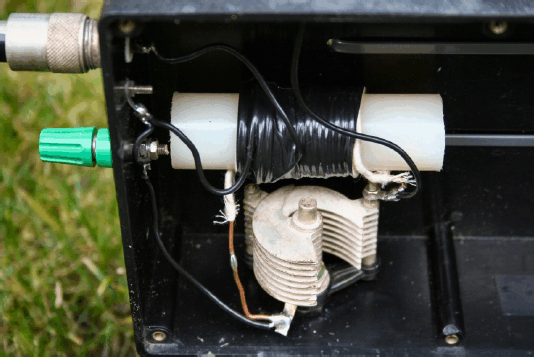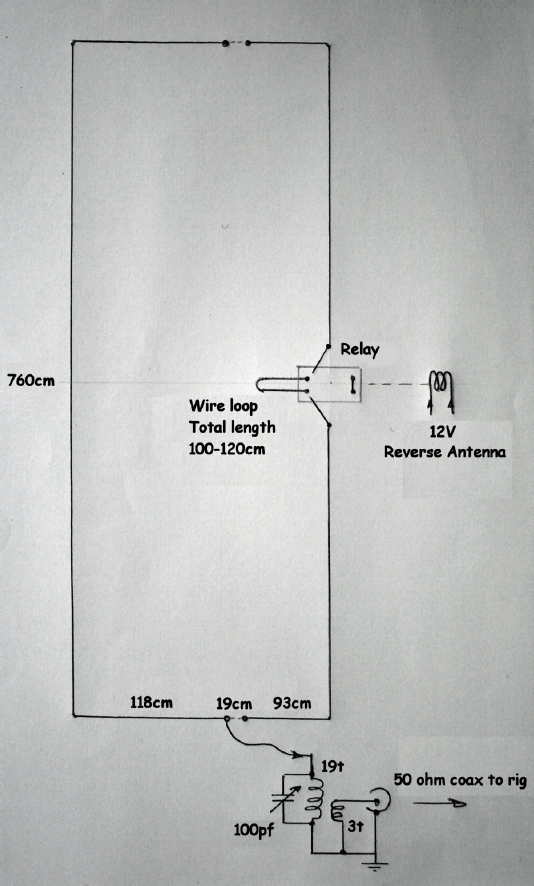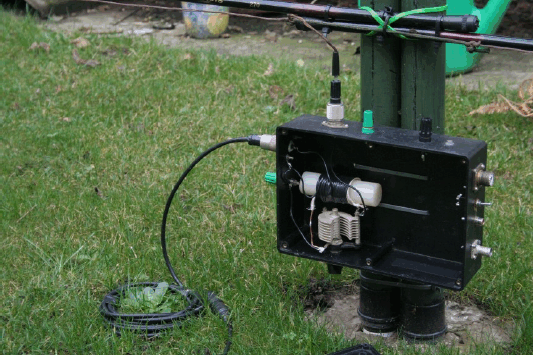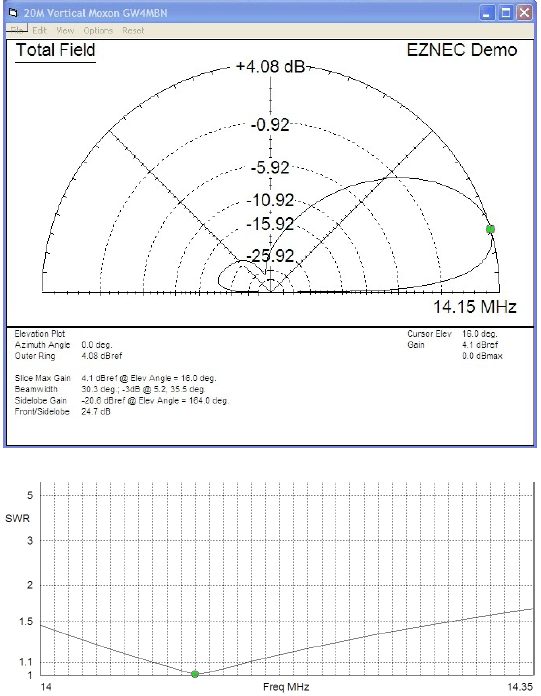GW4MBN'S REVERSIBLE 20 METER VERTICAL MOXON
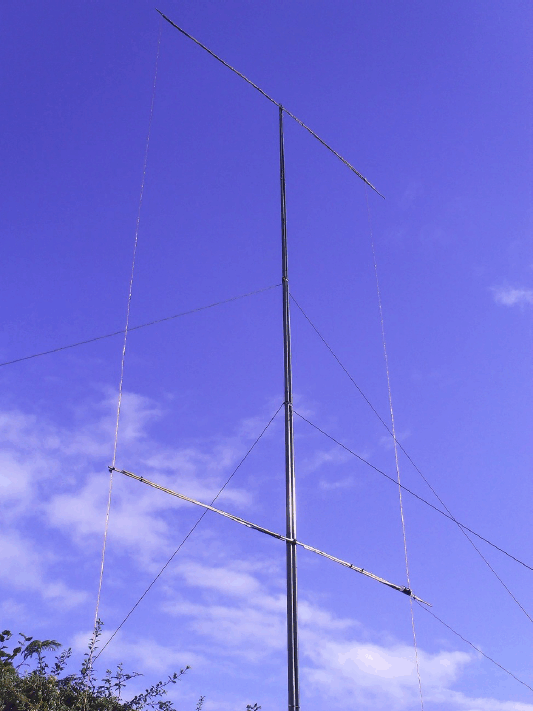
|
GW4MBN, John, designed this wonderful vertical reversible 20 meter moxon: Here's his story.
A Reversible Vertical Moxon for 20M
I decided to try a vertical moxon rectangle at my new QTH which has limited rear garden space. The rear garden runs roughly NW to SE, so a reversible moxon gives useful coverage.
The central mast consists of two 9 metre fibreglass fishing poles, tie-wrapped together for extra rigidity, and fixed into the ground via two PVC waste pipe sections set into the lawn. For the cross-pieces I originally used pairs of 8 foot varnished garden canes. However I recently discovered at a local £1.20 shop, some 2.5 Metre fibreglass fishing rods at half price, so I bought six of these at 60p each, to replace the canes.
The whole assembly is quite light in weight. I have it guyed with polypropylene cord, and there is very little movement even in strong winds.
I used 3mm bare copper flexiweave for the elements. The left hand element is cut to act as a driven element. It is end-fed via a LC tuned circuit mounted in a plastic box at the base of the antenna. The right hand element is cut as a director. On the right hand end of the central cross-piece I have mounted a plastic pill box which houses a small dual pole C/O reed relay. Applying 12V to the relay will insert an extra length of wire (a stub) which converts the director into a reflector, thus reversing the direction of fire. When de-energised, the stub is shorted out. This stub is just a loop of insulated wire attached to the centre crosspiece. Its length is adjusted for best F/B. I found a total length of 120cm about right. The 12V is fed via a length of thin microphone type coax, which runs along and down the director side guy rope. This way, it has negligible effect on the polar diagram or tuning.
The LC circuit consists of about 19 turns of 16 gauge enamelled or cotton covered copper wire wound on a one inch dia teflon rod. The inductance is about 2.5uH which resonates on 14.2Mhz with around 50pF of parallel capacitance. Wound on top of the “cold” end is the secondary winding of 3 to 4 turns of insulated stranded wire.
To tune the antenna, connect a VSWR meter to the output of the LC circuit, briefly apply a low power carrier (5W) and adjust the capacitor for minimum SWR. A sharp null will be found. If the minimum is not low enough, then add or subtract one turn from the secondary winding.
I have been getting excellent reports with this antenna. The F/B is on average 4 points, and often much higher. It's a lovely feeling to be able to instantly reverse the direction by flicking a switch in the shack. One of my first CQ calls received a reply from CO6LC in Santa Clara, Cuba. He gave me 58 with my 100W, so I knew it was working. My QTH is in a valley, 50 feet ASL with rising ground to the west and gently falling ground to the SE and the sea half a mile away.
I had a go at modeling the antenna using the demo version of eznec. Of course, if I could plant this antenna next to seawater in a portable situation, I would get a take-off angle of around 8 degrees and a forward gain of about 7dBd. Now, my back garden in Wales in the winter is permanently waterlogged, so I modeled it using very wet farmland type ground, with the bottom of the antenna at its actual height above ground of 80cm. Any lower than this has a negative effect on the F/B. The result compares well with practice. I found the optimum F/B was obtained with a reflector stub length of 75cm. In practice, I ended up using about 60cm (120cm total wire length).
I think the only other way I could get similar low take-off angle would be a two or three element beam at least 40 feet AGL, which in my location would be impossible and a lot more ugly. This spring I may try the alternative approach of having both sides cut as driven elements with a relay on each side to add a reflector stub to each side in turn. This will also need a relay in the plastic box to switch the feed. I may also try using insulated wire for the elements. Since they will be 5 percent shorter due to velocity factor, I will have a bit more room to raise the bottom a bit higher, however, I am loath to disturb this antenna since it is working so well!
My thanks to SM0DTK and SM5JAB and others whose web-pages helped to inspire me to build this antenna.
John GW4MBN January 2012 FOR A PDF VERSION OF THIS DESIGN, CLICK HERE.
|
visits: [an error occurred while processing this directive]
